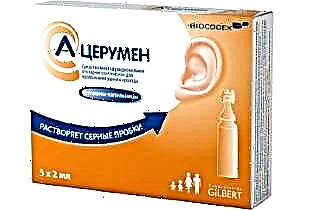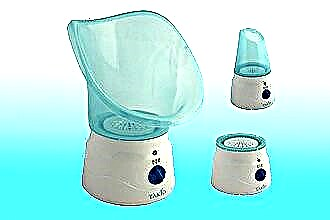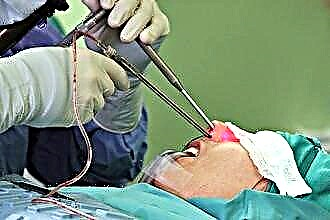In the ear canal, wax is constantly formed. There is nothing wrong with that. On the contrary, it is completely normal and even necessary to maintain the health of the organ of hearing. Sulfur protects it from harmful external influences, and also acts as a moisturizer for the tissues of the ear canal. However, if this protective substance is produced too actively, problems begin to appear in a person - hearing gradually deteriorates.
What to drip into the ear with sulfur plug
 For treatment, the otolaryngologist usually prescribes appropriate medications. The most effective in this case are drops for removing sulfur plugs from the ears. Most often, doctors prescribe these drugs for ear wax:
For treatment, the otolaryngologist usually prescribes appropriate medications. The most effective in this case are drops for removing sulfur plugs from the ears. Most often, doctors prescribe these drugs for ear wax:
- "Remo-Wax"
- "A-Cerumen"
- Hydrogen peroxide (alcohol)
- Wedge-Irs.
Let's consider them in more detail:
- "Remo-Wax" - Finnish-made drops from ear plugs (manufactured by "Orion PHARMA"). The main active ingredient of this agent is allantoin. It has proven to be most effective in removing wax, which first liquefies and then is safely flushed out of the ear. If used for prevention, they are great at helping to keep the ear canal clean. These drops from ear plugs do not contain toxic substances and antibiotics, therefore they are absolutely harmless. They are suitable even for those who suffer from allergies to drug components or have dermatological problems. You can use Remo-Wax only 4-5 times a month. This is quite enough to prevent the accumulation of sulfur and competently observe the hygiene of the hearing organ.
 "A-Cerumen" - ear drops from plugs in the ears, produced and supplied by the French company "Laboratory Gilbert". This drug has received high marks from otolaryngologists. It is characterized by a fairly high efficiency in the removal of accumulations of sulfuric matter. This tool works a little differently than Remo-Wax. When ear drops from "A-Cerumen" plugs get on the sulfur, it begins to dissolve without swelling or increasing in volume. Such an effect is provided by surfactants (so-called surfactants) contained in this preparation. It is they that do not allow the sulfur plug to grow, and also facilitate its facilitated removal outside the auricle. This drug is a great alternative to the old way of dealing with corks, which consisted of mechanical "picking out" them with cotton swabs. Indeed, when using sticks, there is no guarantee of high-quality cleaning of the ear canal, but there is a risk of injury to tissues and membranes. Ear drops for dissolving sulfur plugs "A-Cerumen" act as gently and comfortably as possible, and in most cases they get rid of such a nuisance as sulfur plug.
"A-Cerumen" - ear drops from plugs in the ears, produced and supplied by the French company "Laboratory Gilbert". This drug has received high marks from otolaryngologists. It is characterized by a fairly high efficiency in the removal of accumulations of sulfuric matter. This tool works a little differently than Remo-Wax. When ear drops from "A-Cerumen" plugs get on the sulfur, it begins to dissolve without swelling or increasing in volume. Such an effect is provided by surfactants (so-called surfactants) contained in this preparation. It is they that do not allow the sulfur plug to grow, and also facilitate its facilitated removal outside the auricle. This drug is a great alternative to the old way of dealing with corks, which consisted of mechanical "picking out" them with cotton swabs. Indeed, when using sticks, there is no guarantee of high-quality cleaning of the ear canal, but there is a risk of injury to tissues and membranes. Ear drops for dissolving sulfur plugs "A-Cerumen" act as gently and comfortably as possible, and in most cases they get rid of such a nuisance as sulfur plug.- Despite the fact that today there are highly effective drops from sulfur plugs in the ears, hydrogen peroxide 3% (as an option - alcohol) is still used to eliminate this trouble. Basically, this is a good way to flush the ear canal. However, its frequent use entails an aggravation of pain symptoms, since the tissues of the ear walls are irritated.
The use of high concentration alcohol from the sulfur plug in the ears can provoke a burn of the skin of the auditory canal. Peroxide will be effective if the amount of sulfur build-up is negligible. It can be used only after making sure that there are no dermatological problems, otherwise you can cause harm that is not comparable to sulfur cork.

- "Wedge-Irs" - ear drops from sulfur plugs, which are an innovation of Israeli scientists and doctors. The basis of this unique preparation is an olive oil derivative containing active chemical compounds. It is used for softening, subsequent dissolution and, finally, removal of sulfur deposits. The tool launches a natural cleansing mechanism, and the gentle method of introducing drops into the ear canal makes it possible to maintain a uniform pressure of the liquid stream. Thus, you can not be afraid to injure the eardrum.
Which drug to prefer
| Drug name | Advantages |
| "Remo-Wax" | The best drops in the ears for sulfur congestion, as well as for the prevention of their appearance. A complex action is characteristic: dissolution of already existing sulfur masses and prevention of the appearance of future accumulations. |
| "A-Cerumen" | These drops for removing wax plug are suitable not only for treatment, but also for traditional hygiene of the ear canal. For hygienic purposes, the application period is unlimited. |
| Hydrogen peroxide (alcohol) | The simplest and most inexpensive "drops" for removing ear plugs. The effectiveness of peroxide has been proven for the longest period of its use in such problems. After all, it was successfully used long before the advent of modern drugs. |
| "Wedge-Irs" | These ear drops from plugs are very effective, easy to use and reliable. The first results appear within 3-4 hours after the start of the drug use. In especially difficult cases, it takes several days to remove sulfur accumulations. The main advantage of this product is that the process of removing wax from the ear occurs as naturally as possible. |
Post factum
When choosing ear drops that dissolve sulfur plugs, it must be borne in mind that some cerumenolytics can be effective in some people, while helping others very little. For example, the same well-known "A-Cerumen" can very efficiently and quickly deal with the sulfur plug in one person, but will not help another. Therefore, when choosing, you should not rely on the words of friends or relatives who claim that such and such a drug immediately helped them. He helped them, but for you, perhaps, he will be useless.
Hence the conclusion: it is still recommended to consult with a specialist before starting to test the entire arsenal of anti-sulfuric agents for cleaning ears on yourself.
Sulfur plugs are not the same for all people. They vary in size and consistency. Also a significant factor is the presence of concomitant pathologies - some of them may be contraindications for the use of a particular remedy. The age of sulfur deposits is also important. All of the above means that cerumenolytic drops, of course, will be useful, but to what extent - this question remains unanswered without a preliminary examination by an otolaryngologist.

 "A-Cerumen" - ear drops from plugs in the ears, produced and supplied by the French company "Laboratory Gilbert". This drug has received high marks from otolaryngologists. It is characterized by a fairly high efficiency in the removal of accumulations of sulfuric matter. This tool works a little differently than Remo-Wax. When ear drops from "A-Cerumen" plugs get on the sulfur, it begins to dissolve without swelling or increasing in volume. Such an effect is provided by surfactants (so-called surfactants) contained in this preparation. It is they that do not allow the sulfur plug to grow, and also facilitate its facilitated removal outside the auricle. This drug is a great alternative to the old way of dealing with corks, which consisted of mechanical "picking out" them with cotton swabs. Indeed, when using sticks, there is no guarantee of high-quality cleaning of the ear canal, but there is a risk of injury to tissues and membranes. Ear drops for dissolving sulfur plugs "A-Cerumen" act as gently and comfortably as possible, and in most cases they get rid of such a nuisance as sulfur plug.
"A-Cerumen" - ear drops from plugs in the ears, produced and supplied by the French company "Laboratory Gilbert". This drug has received high marks from otolaryngologists. It is characterized by a fairly high efficiency in the removal of accumulations of sulfuric matter. This tool works a little differently than Remo-Wax. When ear drops from "A-Cerumen" plugs get on the sulfur, it begins to dissolve without swelling or increasing in volume. Such an effect is provided by surfactants (so-called surfactants) contained in this preparation. It is they that do not allow the sulfur plug to grow, and also facilitate its facilitated removal outside the auricle. This drug is a great alternative to the old way of dealing with corks, which consisted of mechanical "picking out" them with cotton swabs. Indeed, when using sticks, there is no guarantee of high-quality cleaning of the ear canal, but there is a risk of injury to tissues and membranes. Ear drops for dissolving sulfur plugs "A-Cerumen" act as gently and comfortably as possible, and in most cases they get rid of such a nuisance as sulfur plug.

